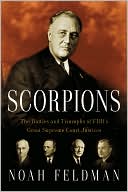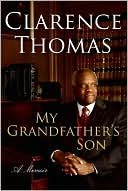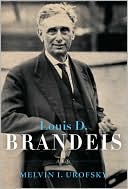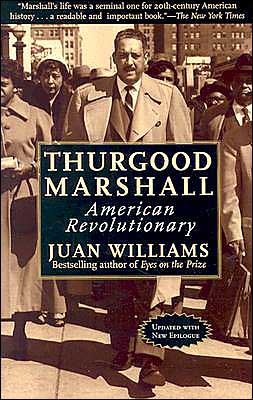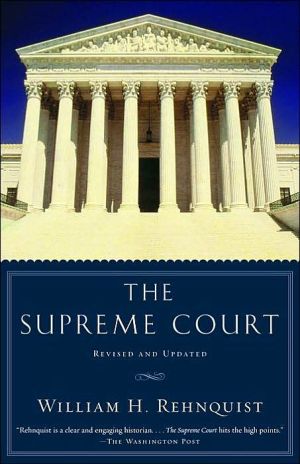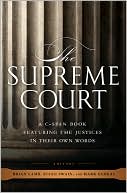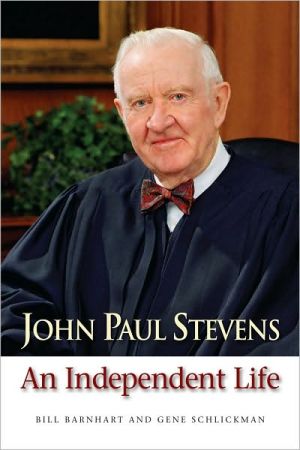Judge Sewall's Apology: The Salem Witch Trials and the Forming of an American Conscience
Review “A sensitive and scholarly rendering with far-reaching perspectives that bring Sewall off the page...fresh [and] insightfully written.” -- Kirkus Reviews (starred review)“An engrossing biography [that] gives readers insight into the character of colonial America…the author’s gifts as a writer are evident.” -- St. Louis Post-Dispatch“Both an account of a troubling historical episode and the portrait of a troubled, complex man.” -- Wall Street Journal The Salem witch hunt...
Search in google:
Samuel Sewall was one of nine judges appointed to hear the Salem witch trials of 1692, and alone among them publicly apologized for his role in the incident five years later. A historian of American culture, Francis (creating writing, Spa U., England) finds in that apology, and in Sewall's life in general, a demonstration of the end of the Puritan view of the world as a simple struggle between Good and Evil. He draws on Sewall's extensive and detailed diaries as well as on other primary sources. Annotation ©2005 Book News, Inc., Portland, OR The Washington Post - Sadakat Kadri Francis's book succeeds because it does not attempt to compass the conscience of the changing New World; instead, it allows Sewall to give voice to the world in which he lived. The author decrypts his microcosm with skill, conjuring a recognizably moral man and the increasingly complex community in which he came of age.
Judge Sewall's Apology\ The Salem Witch Trials and the Forming of an American Conscience \ \ By Richard Francis \ HarperCollins Publishers, Inc.\ Copyright © 2005 Richard Francis\ All right reserved.\ ISBN: 0007163622 \ \ \ Chapter One\ The Shaggy Dog\ During his adult life, Samuel Sewall would be haunted by an image in the book of Revelation: an angel, with a rainbow on his head, is standing with an open book in his hand. The angel plants one foot on the sea and the other on the earth. Sewall came to interpret that stance as meaning that the angel was straddling Europe (the earth) and America (the land discovered in the middle of the sea), and from that reading he derived a glorious vision of America's destiny. Perhaps one of the reasons why the picture had such imaginative power for him was that it seemed to sum up his own condition, from the moment of his birth, as someone with a foothold in both the Old World and the New.\ Samuel Sewall was born on 28 March 1652, in the Hampshire village of Bishop Stoke, a little north of Southampton, before dawn on a Sunday. It gave him pleasure to reflect later that Sabbath light was the first to enter his eyes, as if it provided a spiritual basis to everything he subsequently saw.\ North America, as a European settlement, was less than half a century old, New England not much more than a quarter of a century, but already this child born in Hampshire had roots there. The Pilgrim Fathers had crossed the Atlantic on the Mayflower in 1620 and settled in Plymouth, just to the west of Cape Cod; ten years later, a fleet of ships led by the Arbella brought a company of Puritans under the leadership of John Winthrop to build a community in a natural harbor that they called Boston, and establish the Massachusetts Bay colony. Only five years after that, Sewall's father, Henry Sewall, arrived. He brought "English servants ... Cattel and Provisions sutable for a new Plantation" across the Atlantic with him, and took a grant of five hundred acres in the settlement of Newbury, on the northern edge of Massachusetts Bay.\ The immigrants had come across the ocean for reasons of conscience: the desire to practice their faith without harassment from authorities wanting them to conform to orthodox Anglicanism. But they also had to make a living, and those who'd invested in their adventure wanted to make a profit--mixed motives from the start, though both elements reinforced community values and the need to make order out of chaos. John Winthrop gave a sermon as the Arbella made its way over the ocean toward the New World. He didn't evoke the vast wilderness to which he and his party were heading but instead pictured the future result of their efforts, an exemplary city on a hill, which others would look up to as an example of spirituality and civic harmony: "wee must be knit together in this worke as one man ... alwayes haveing before our eyes our Commission and Community in this worke, our Community as members of the same body." As John Eliot, the great minister to the Indians, would put it, "for as hell is a place of confusion, so heaven of order."\ However, despite this need for cooperation on both spiritual and material planes, certain other settlers were less orderly. It was a raw, challenging environment, attracting its share of adventurers and misfits. As early as 1627, one colonist had attempted to set up an alternative community at Merry Mount, where members got drunk, danced round a maypole, and hobnobbed with the Indians.\ Henry Sewall was only twenty when he arrived in America, and the cattle and provisions represented a family investment. He'd been sent by his father, Henry Sewall Sr., who joined him a year later. The latter's motive in organizing this family upheaval seems to have been the standard blend of practical and spiritual reasons: farming on the one hand, a "dislike to the English Hierarchy" (that is, of the existence of bishops in the Anglican church), on the other. But though the Sewalls were descended from a long line of successful merchants and community leaders (several of them were mayors of Coventry), and though the prevailing culture among fellow Puritans in the early settlement was of sobriety and austerity, Henry Sewall Sr. was immune to the civic respectability that these combined traditions brought with them.\ He was a rough, individualistic, cantankerous sort of settler, with an undercurrent of violence. His father left a will asking him to admit his misbehavior toward his mother; his mother left one forgiving him but cutting him off with only a shilling. Almost as soon as he arrived in Newbury, he arranged a legal separation from his second wife, Ellen (Samuel Sewall was the grandson of her predecessor, Anne), and three years later he appeared before a grand jury on a charge of beating her. He got into trouble with the law for other reasons too, including contemptuous speech and carriage to Richard Saltonstall, one of the leaders of the colony, and was bound over in the sum of £66 13s. 8d. He seemed to have a problem with hierarchy in general, not just that of the English church. After a row about whether the Newbury meetinghouse should be moved from its site (conveniently near to his own house on Newbury's Lower Green), he moved out in high dudgeon, went across the river, and settled in Rowley, where in due course he was in trouble again, for disturbing worship and arguing with the pastor at the Rowley meetinghouse. Rumor had it that he was slightly deranged. He was a brooding, difficult man of the frontier, while order was being asserted around him in the face of the wilderness.\ No such problems are evident with respect to Henry Sewall Jr., though he was once fined a shilling for missing a town meeting. His cattle farming went well, and he accepted new grants of land as pasture over the years ...\ \ Continues... \ \ \ \ Excerpted from Judge Sewall's Apology by Richard Francis Copyright © 2005 by Richard Francis. Excerpted by permission.\ All rights reserved. No part of this excerpt may be reproduced or reprinted without permission in writing from the publisher.\ Excerpts are provided by Dial-A-Book Inc. solely for the personal use of visitors to this web site. \ \
\ St. Louis Post-Dispatch"An engrossing biography [that] gives readers insight into the character of colonial America…the author’s gifts as a writer are evident."\ \ \ \ \ Wall Street Journal"Both an account of a troubling historical episode and the portrait of a troubled, complex man."\ \ \ Wall Street Journal“Both an account of a troubling historical episode and the portrait of a troubled, complex man.”\ \ \ \ \ St. Louis Post-Dispatch“An engrossing biography [that] gives readers insight into the character of colonial America…the author’s gifts as a writer are evident.”\ \ \ \ \ Sadakat KadriFrancis's book succeeds because it does not attempt to compass the conscience of the changing New World; instead, it allows Sewall to give voice to the world in which he lived. The author decrypts his microcosm with skill, conjuring a recognizably moral man and the increasingly complex community in which he came of age.\ — The Washington Post\ \ \ \ \ Publishers WeeklyIn this lively chronicle, historian Francis (Transcendental Utopias) offers a compelling portrait of the decline of Puritan ways in the late 17th century and the ascent of a secular spirit in the Massachusetts Bay Colony. Although devout, Samuel Sewall (1652-1730) turned away from an early religious vocation to pursue a career in public office and married into the colony's aristocracy. He found himself catapulted into the limelight as one of nine judges who condemned the alleged witches of Salem in 1692. Francis calls this the turning point in Sewall's life and work. Never convinced that the condemned women were guilty, Sewall felt remorse; in 1697 he walked into a Boston church and offered a public apology, the only one of the three judges to do so. As a result, he was rebuffed by his social circle. Yet, according to Francis, Sewall's courage is magnified by his taking a stand he knew would result in ostracism. In his later years, Sewall wrote tracts opposing the colonists' treatment of Indians and slaves. Francis beautifully captures not only Sewall's personality and significance but also the shifting times in which he lived, when it was becoming no longer possible to "see the world as a simple allegorical struggle between... good and evil." B&w illus. Agent, Caroline Dawnay at PFD, U.K. (Aug. 16) Copyright 2005 Reed Business Information.\ \ \ \ \ Kirkus ReviewsThe life and turbulent times of the only judge fully to recant the actions of a court that sent 19 accused witches to the gallows in colonial Massachusetts. Since the copious diary of Samuel Sewall (1652-1730), spanning nearly 57 years, is a principal source of material regarding the motives and reasoning of those who convened the notorious Witch Trials in 1692, it has been well perused prior to being taken up by biographer, novelist and historian Francis (Creative Writing/Bath Spa Univ.; Prospect Hill, 2004, etc.). Yet his is both a sensitive and scholarly rendering, with far-reaching perspectives that bring Sewall off the page as he confronts both the material and spiritual worlds of his time. Francis ferrets out his subject's anxieties, obsessions and anathemas (he was consoled in good measure though not entirely by the rigidly elaborate tenets of his Puritan faith) to conclude: "He was confident for much of the time but could be gauche and awkward too," and though he was devout, he "loved the good things in life, especially music, food and drink." While Sewall often stood unflinchingly in liberal opposition to clerics and leaders on such issues as the treatment of Indians (he favored fairness, education and conversion) and the rights of women, he also courted the in crowd and felt stress whenever his approaches seemed rebuffed. Tapped as a judge in the infamous proceedings that brought down death sentences on the basis of "spectral evidence," his popularity and influence fed into the key decisions on the bench with no hint at how soon they would become onerous. Five years later, his uniquely unqualified apology was read to a congregation commemorating the victims of Salem's trials."Somehow, by the end of his life," Francis asserts, "the former witchcraft judge had made himself a recognizably modern man."Fresh, insightfully written investigation of how colonial Puritanism's core beliefs and ragged edges produced its most ungodly legacy.\ \

